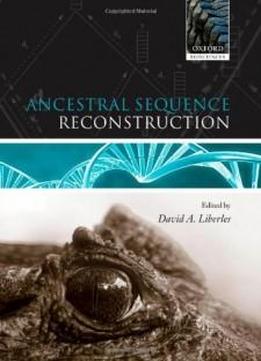
Ancestral Sequence Reconstruction
by David A. Liberles /
2007 / English / PDF
5.7 MB Download
Ancestral sequence reconstruction is a technique of growing
importance in molecular biology and comparative genomics. As a
powerful technique for both testing evolutionary and ecological
hypotheses as well as uncovering the link between sequence and
molecular phenotype, there are potential applications in a number
of fields. Beginning with a historical overview of the field
including apllications, the discussion then moves into potential
applications in drug discovery and the pharmaceutical industry. A
section on computational methodology provides a detailed discussion
on available methods for reconstructing ancestral sequences,
including advantages,disadvantages, and potential pitfalls. Purely
computational applications, including whole proteome reconstruction
are discussed. Another section provides a detailed discussion on
taking computationally reconstructed sequences and synthesizing
them in the laboratory, while the last section describes scientific
questions where experimental ancestral sequence reconstruction
coupled to a computaional and experimental how-to guide, while
simultaneously addressing some of the hot topics in the field.
Ancestral sequence reconstruction is a technique of growing
importance in molecular biology and comparative genomics. As a
powerful technique for both testing evolutionary and ecological
hypotheses as well as uncovering the link between sequence and
molecular phenotype, there are potential applications in a number
of fields. Beginning with a historical overview of the field
including apllications, the discussion then moves into potential
applications in drug discovery and the pharmaceutical industry. A
section on computational methodology provides a detailed discussion
on available methods for reconstructing ancestral sequences,
including advantages,disadvantages, and potential pitfalls. Purely
computational applications, including whole proteome reconstruction
are discussed. Another section provides a detailed discussion on
taking computationally reconstructed sequences and synthesizing
them in the laboratory, while the last section describes scientific
questions where experimental ancestral sequence reconstruction
coupled to a computaional and experimental how-to guide, while
simultaneously addressing some of the hot topics in the field.











